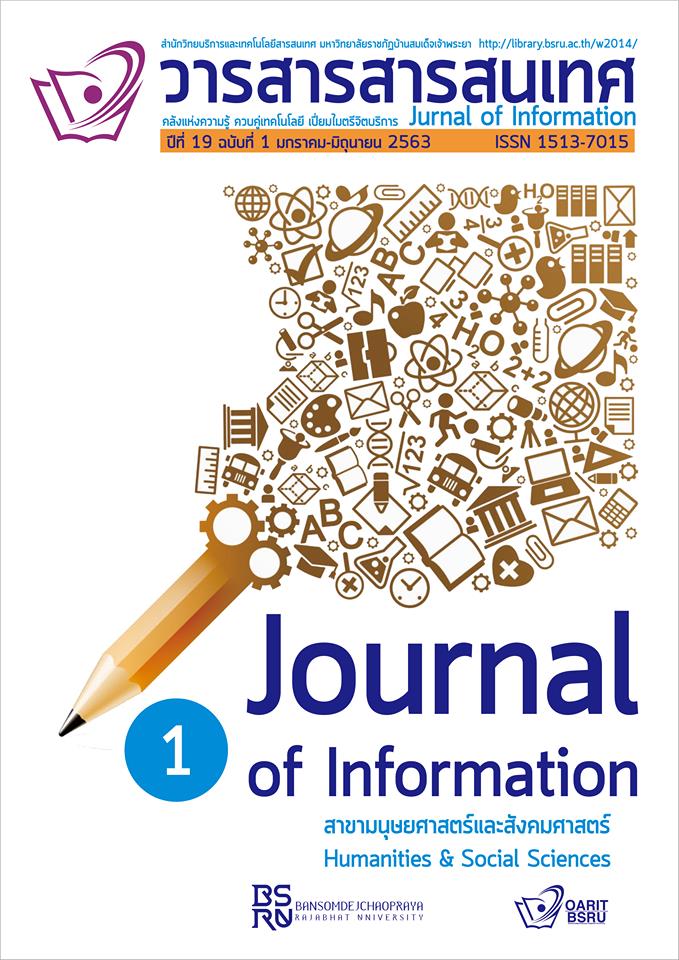Social Management for Elderly of Municipalities in Nonthaburi Province
Keywords:
Social administration for elderlies, Input, process, productAbstract
The purposes of this research were to study input, process, productivity, and social administration for elderlies in 1. relationship between the items; 2. confirmatory factors for items; 3. causal relationships of the items. 400 samples were selected by simple random sampling method from elderly groups of municipalities in Nonthaburi province.
Research instrument is a set of questionnaires with 5 scale intervals. Statistics used for analysis were frequency, percentage, mean, standard deviation, correlation analysis, confirmatory factor analysis, and structural equations analysis.
The findings indicated that 1. all aspects were statistically significant at the 0.01 level,2. structural model was consistent with empirical data, and 3. structural equation of factors were consistent with the empirical data. The test showed goodness of fit indices Chi-square of 332.621, (χ2/df) at 1.858 and degree of freedom at 179 , Goodness of fit index(GFI) is 0.931, Adjusted Goodness of fit index (AGFI) is 0.902 and Root Mean Square of Error Approximation(RMSEA) is 0.046.
This research contributes to a new body of knowledge that demonstrate how social administration for the elderly can be indirectly affected through process and productivity. The result also showed that process effect social administration for the elderly directly and that process effect social administration for the elderly indirectly through productivity.
References
กริช แรงสูงเนิน. (2554). การวิเคราะห์ปัจจัยด้วย SPSS และ AMOSเพื่อการวิจัย. กรุงเทพฯ:
ซีเอ็ดยูเคชั่น
พรทิพย์ มานพคา. (2562, พฤษภาคม – สิงหาคม). การประเมินผลการจัดบริการสังคมแก่ผู้สูงอายุขององค์กรปกครองส่วนท้องถิ่น จังหวัดนราธิวาส. วารสารบัณฑิตศึกษา มหาวิทยาลัยราชภัฏ
วไลยอลงกรณ์ ในพระบรมราชูปถัมภ์, 13(2), 105-121.
Arbuckle, J. (2011). IBM SPSS Amos 20 user’s guide. Mount Pleasant: Amos Development.
Bollen, K. A. (1989). Structural equations with latent variables. New York: Wiley.
Bollen, K. A., & J. S. Long, eds. (1993). Testing structural equation models. Newbury Park, CA: Sage.
Kaplan, D., (2000). Structural equation modeling. Thosand Oaks, California: Sage.
Krejcie, R. V. & Morgan, D. W. (1970). Determining sample size for research activities. Educational and Psychological Measurement, 30(3), 607-610.
Downloads
Published
How to Cite
Issue
Section
License
บทความ ข้อความ ภาพประกอบ และตารางประกอบที่ลงพิมพ์ในวารสารเป็นความคิดเห็นส่วนตัวของผู้นิพนธ์ กองบรรณาธิการไม่จำเป็นต้องเห็นตามเสมอไป และไม่มีส่วนรับผิดชอบใดๆ ถือเป็นความรับผิดชอบของผู้นิพนธ์เพียงผู้เดียว






